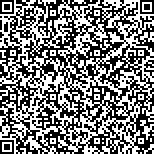下载中心
优秀审稿专家
优秀论文
相关链接
摘要

遥感试验是进行遥感原理的验证、遥感模型与反演方法的发展、遥感产品的真实性检验,推动卫星计划的论证实施及其观测在地球系统科学中应用的重要途径。在闪电河流域水循环与能量平衡遥感综合试验中,利用机载L波段主被动一体化微波探测仪开展了以土壤水分为首要目标的大型航空遥感试验。其中,被动探测部分即微波辐射计采用微带天线,辅以机械扫描方式进行多角度成像观测。为有效支撑微波辐射计数据的处理及定量反演,必须对机载微波辐射计进行实时定标,本文采用分步定标法进行辐射亮温的定标,即在实验室对定标链路中的噪声源进行定标,得出对应的辐射亮温;飞行试验中,利用该两个参考点得到辐射计输出电压和亮温的关系,同时选取试验区域附近的水体作为外定标参考点,进行定标方程的修正。结果表明,机载辐射亮温与地面参考点(草地)模拟亮温比较吻合,二者对比结果显示均方根误差最小为0.93 K(2018-09-26,H极化),无偏均方根误差最小为0.96 K(2018-09-24,V极化),有效支撑了国产L波段微波辐射计相关卫星计划的论证以及后续的定量反演与降尺度等相关研究工作的开展。
关键词:
遥感 主被动一体化微波探测仪 机载综合试验 机载微波辐射计 定标The remote sensing experiment is an important way to verify the principle of remote sensing, develop remote sensing models and retrieval algorithms, and to validate remote sensing products. It is also important to promote the demonstration of satellite missions and the application of its observations in earth system science. In the ShanDian River comprehensive remote sensing experiment, a large-scale aerial remote sensing experiment with soil moisture as the primary target was carried out using the airborne L-band active and passive microwave sounder. The passive detection part, the microwave radiometer, uses a microstrip antenna, supplemented by a mechanical scanning method for multi-angle imaging observation. In order to effectively support the development of remote sensing models and algorithms, real-time calibration of brightness temperature must be performed. This paper introduces a distributed calibration method combining internal and external calibration.Due to the limitation of the space and weight of the aircraft, the end-to-end calibration method cannot be used to calibrate the system. Therefore, the step-by-step calibration method is used in the test. First use Standard noise generator on the ground to calibrate the brightness temperature of the internal noise source, and then measure the antenna radiation efficiency, main beam efficiency, cable loss and other parameters. During the flight, use the reference load and the internal noise source as the two-point standard sources. The relationship between the receiver and the input brightness temperature is obtained, and finally the parameters of the ground measurement system are substituted to obtain the calibration equation of the airborne radiometer. During the flight, the water body in the Hulunnao’er was selected as the reference point for external calibration target to correct the equation.The results show that the airborne radiation brightness temperature is relatively consistent with the ground reference point (grassland) simulated brightness temperature. The comparison shows that the minimum root mean square error is 0.93 K (September 26, 2018, H polarization), and the unbiased average The minimum square root error is 0.96K (September 24, 2018, V polarization), which effectively supports the demonstration of the domestic-made L-band microwave radiometer satellite program and the subsequent development of related research work such as quantitative inversion and downscaling.The calibration method adopted in this paper can accurately describe the complex relationship between the radiometer electrical signal and the brightness temperature. However, this study did not consider the effects of antenna port matching, aircraft pod loss, antenna pattern error, etc. During the calibration of internal noise sources on the ground, the impact of the environment and the system nonlinearity were not considered. It is necessary to take these factors into consideration in subsequent research, and the calibration accuracy can be further improved.

